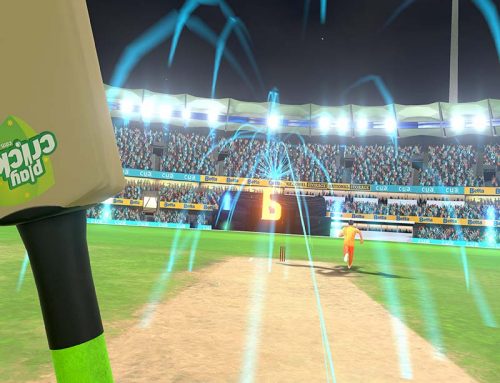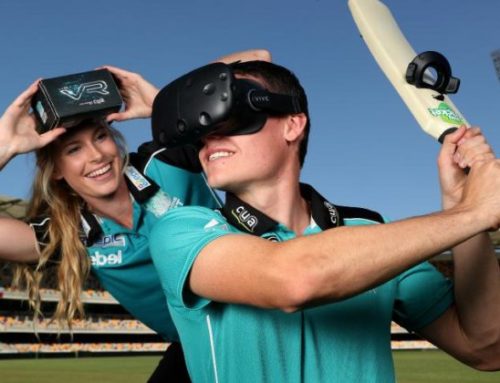Things I Learnt Real Fast About Virtual Reality and Consumer Engagement
THIS is what I learnt real fast about consumer engagement and story telling in Virtual Reality.
For the last 15 years I have worked in advertising and in this time I have seen a lot of things evolve with tools for marketers and how consumers deal with brands. The rise in online video has been a hot topic and now Virtual Reality has been trending like crazy. The one thing all of our clients ask is:
“This looks amazing, but how do we use this for us?”
The simple answer is that Virtual Reality has something for everyone, even though some may disagree. The role Lightweave provides for clients is to introduce the opportunities within Virtual Reality and develop strategies around a specific brands requirements. We introduce clients to all of the options available within technology and allow them to experience how it could align with their brand. This in turn allows them to make an educated decision on what aligns with their key objectives of a campaign.
Interactive? Non-Interactive? Scalable? Physical activation setups? CGI? 360 Content? 360 Video? Oculus? HTC Vive, Samsung Gear? Google Cardboard? There is something in there for everyone, but each clients needs are different.
We live in a world now where people want to experience something. They don’t want to be told about how amazing something is, but rather they want to experience it and feel connected. The real key area for brands to achieve strong consumers engagement, is around creating experiences where audience become the hero. With all of our licensable experiences we focus on making the user at the forefront of the experience and require them to interact within the space. This could be standing in front of a life size dinosaurs that interact with you and your movements or standing inside an off the plan property with interactive elements which let you feel at home. The possibilities are endless with Virtual Reality and Augmented Reality, but there is a need for the content to be well crafted and integrated into the overall strategy.
“Make the customer the hero of your story.” – Ann Hadley
The story of the brand can now be an immersive experience that can help educate the consumer in the decision making process. The role of a brand has now almost become the bedtime story teller and help all those consumer dreams come to life.
“Marketing is no longer about the stuff that you make, but about the stories you tell.” – Seth Godin
The ‘Field of Play – Rugby League Experience’ campaign at Strathpine Shopping and in association with Showtime Attractions, ticked all the boxes for a memorable consumer experience. The campaign, led by Kelsey McAlpine at Strathpine, recently gave consumers the ability to verse Darren Lockyer in a Virtual Reality beat the buzzer Rugby League Experience. The activation opened up a money can’t buy experience where die hard football fans had the chance to be score more points than Darren Lockyer in Virtual Rugby League. There are a handful of people this week who can say they have out scored one of NRL’s greatest players.
The campaign delivered an experience that created on going stories.
Some quick lessons we learnt in consumer engagement with Virtual Reality:
- Virtual Reality is still fresh and mind blowing for users who are appreciative for being provided the opportunity to experience it.
- Sharing on social media – The experiences are creating real connection and consumers are very willing to share. The Lightweave social media software supplies them with personalised content from their experience, which is sharable of social channels.
- Content is still king and brands have the opportunity to create lasting memories with their audience. Poorly developed content will be brought to your attention REAL quick.
- Consumers are willing to provide data to experience Virtual Reality. The use of interactive VR and score based content, requires data of consumers so that brands can engage with them on incentives after the experience has concluded.
- Short experience are accepted by consumers if the content is developed to be super engaging.
- Virtual Reality can immerse a user within 10+ seconds within a virtual environment and separate them from their physical location.
- Scalable and immersive content can be partnered in a perfect relationship. This includes Virtual Reality and Augmented Reality applications.
- Motion sickness is something that can be avoided (which we do avoid) and is an issue in development.
The team at Lightweave have been building licensable and custom Virtual Reality content with a focus on many sectors, such as retail, sporting, property and consumer brands. The roll out of licensable Virtual Reality shopping centre activations during peak periods has enabled Lightweave to observe high flow of users and understand their behaviour.
The use of Virtual Reality should be considered when looking at an integrated marketing campaign. There are solutions that are available with immersiveVR and scalableVR, both have their place in a campaign and can provide an different levels engagement opportunities with a brand.
The world of Virtual Reality is evolving quickly and can be powerful for the brands who understand where it’s potential is for them. For brands who are looking to investigate VR, my advice is to not look at it as just a gaming experience and think outside the box.




